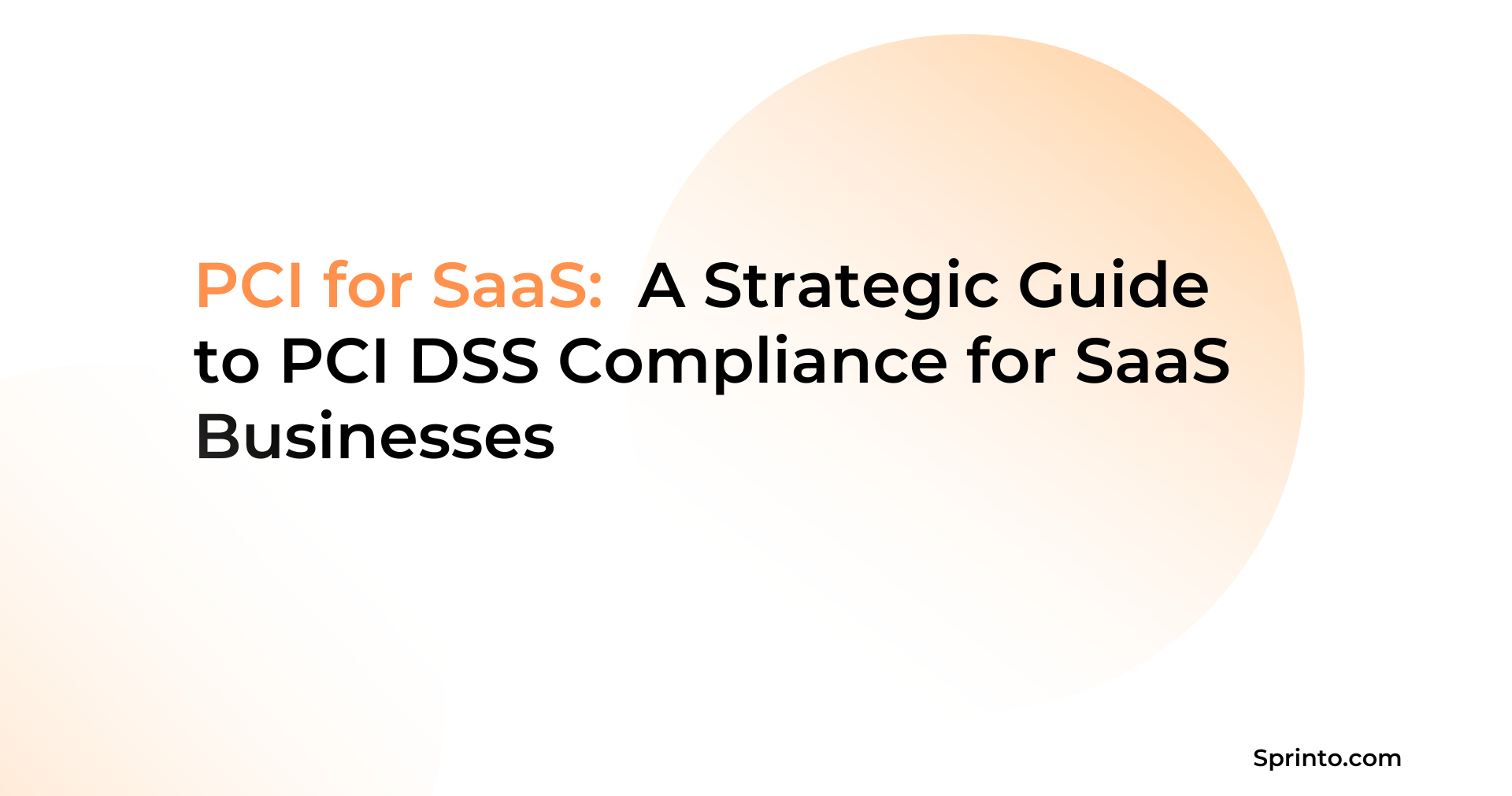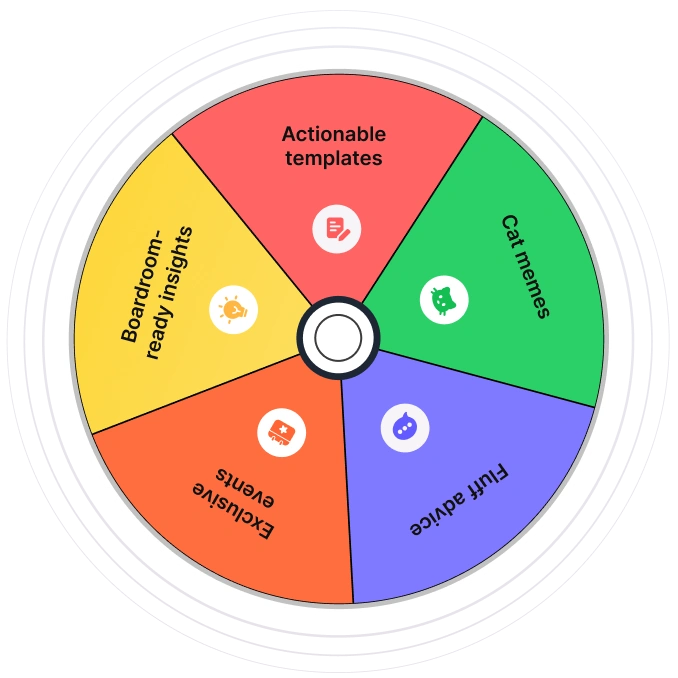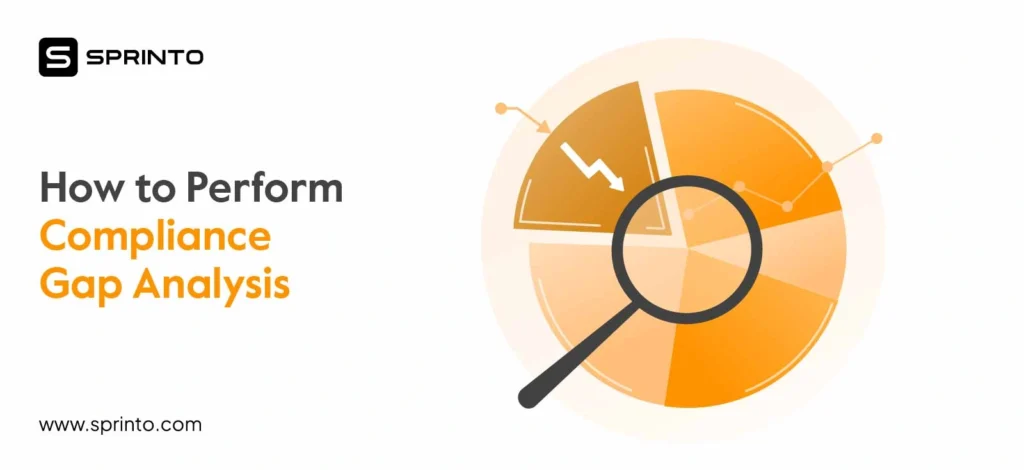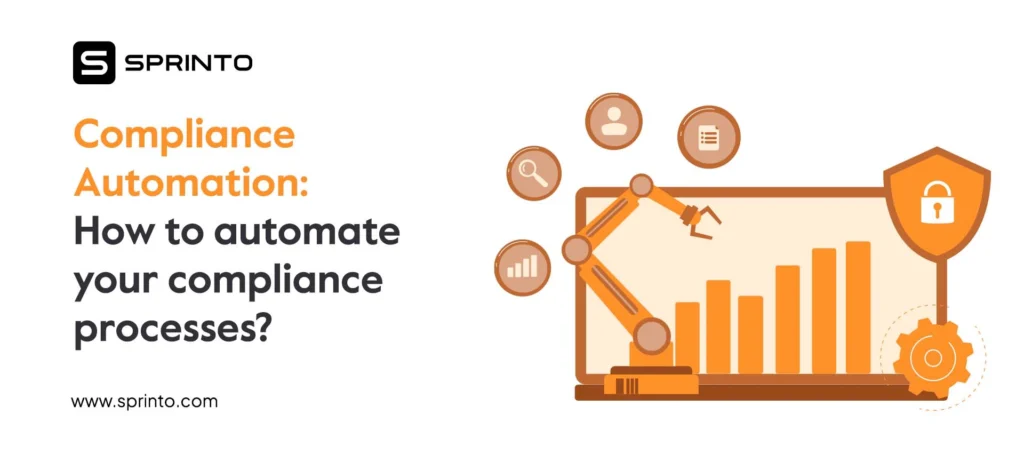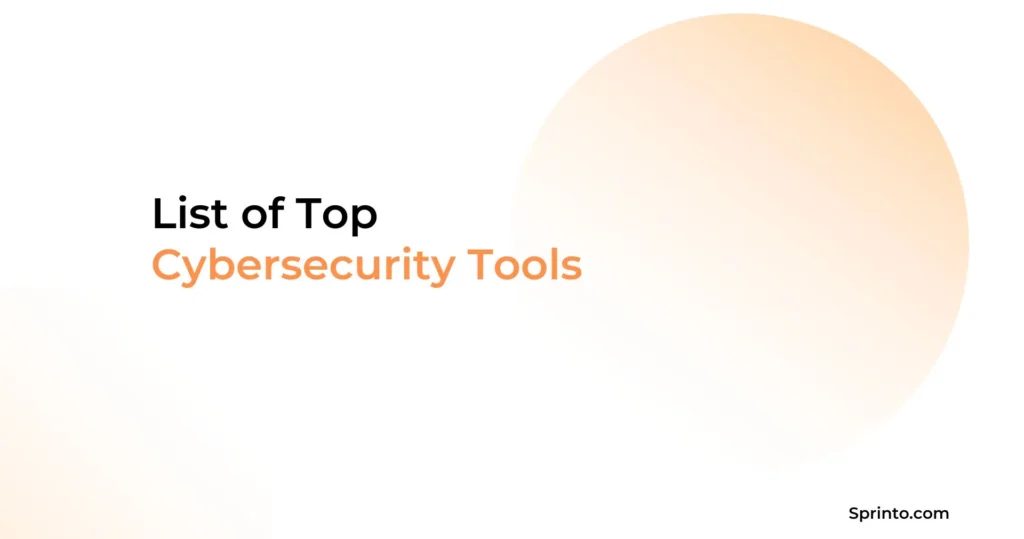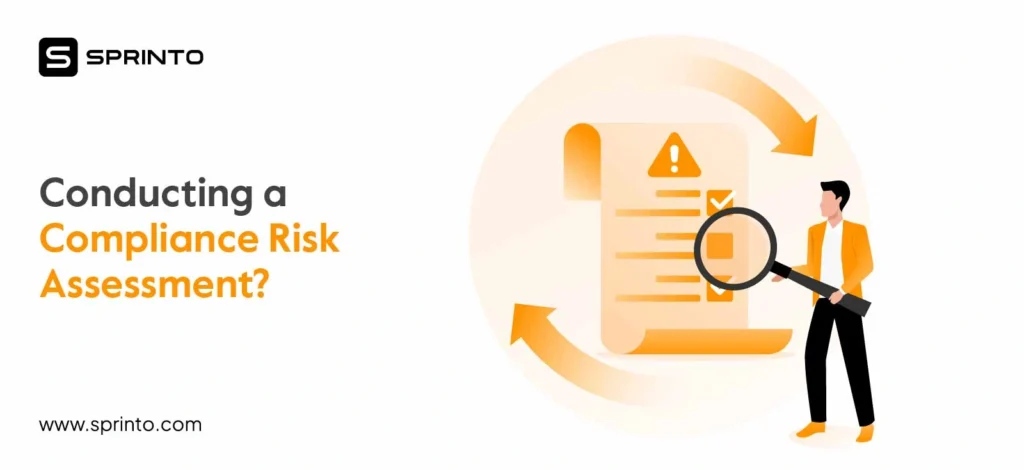If you’re a founder, IT, or compliance leader in SaaS, you’ve likely faced the same dreaded moment: an enterprise prospect hits pause because you’re not PCI compliant yet. And suddenly, you’re knee-deep in checklists, unsure where SaaS fits into a retail-centric framework designed two decades ago.
PCI is still absolutely critical for safeguarding payment data and winning customer trust. The challenge is that it wasn’t written with SaaS in mind, so applying it to cloud-native platforms requires careful adaptation. Get it wrong, and the consequences are immediate: stalled deals, heightened legal risk, and damage to the credibility your brand is built on.
This guide rewrites the playbook for SaaS. You’ll get a practical, jargon-free breakdown of PCI for cloud-native teams: what applies, how to tackle it efficiently, and where automation (like Sprinto) can save your team hundreds of hours. Whether you aim to pass your first audit or level up your compliance muscle, this is your end-to-end blueprint for PCI DSS in a SaaS world.
What is PCI for SaaS?
PCI for SaaS is the application of PCI DSS (Payment Card Industry Data Security Standard) compliance standards within cloud-based software environments. SaaS companies that store, process, or transmit cardholder data must implement PCI DSS controls to protect sensitive payment information and maintain secure operations.
Achieving compliance reduces the risk of data breaches and financial penalties and reinforces trust with customers and partners. These standards are governed globally by the PCI Security Standards Council, which defines and updates the PCI DSS framework.
Why do SaaS companies need PCI compliance?
PCI DSS isn’t just for big fintech firms. It applies to any business that interacts with cardholder data in any form.
If you’re unsure whether PCI applies to your SaaS business, here’s a checklist for you:
- PCI DSS is required if you process card data: If your SaaS platform processes, stores, or transmits credit card data, PCI DSS compliance is mandatory.
- PCI DSS applies if you handle data: This includes payment gateways, billing systems, or even SaaS apps that collect client card information.
- PCI DSS is required even if you use a third-party processor: Using Stripe, Braintree, or similar doesn’t shift all responsibility; you still need to secure your stack.
Shared responsibility is key. Under PCI’s shared responsibility model, you’re accountable for how card data flows through your tech ecosystem. Even if your infrastructure is fully cloud-hosted (e.g., on AWS or GCP), you’re still responsible for properly configuring services, encrypting cardholder data, and enforcing access controls.
PCI DSS requirements for SaaS
Here are the key PCI DSS requirements SaaS companies must address. These aren’t just generic security practices. They are specific, auditable mandates that need to be mapped clearly to your cloud infrastructure and internal workflows:
- Install and maintain firewalls: This includes cloud-native firewall configurations, network segmentation, and microsegmentation to ensure that CHD (cardholder data) flows only through secured pathways.
- Encrypt transmissionof cardholder data: SaaS companies must use TLS 1.2 or higher for all cardholder data in transit and implement HSTS to prevent downgrade attacks.
- Restrict accessto cardholder data: Implement the principle of least privilege (PoLP), supported by IAM roles, RBAC, and policy-based access control across services.
- Maintain secure systems: Cloud workloads must be regularly scanned, and containers/images should be rebuilt when vulnerabilities are detected.
- Use strong access control measures: MFA is required for administrative access and should be enforced across VPNs, dashboards, cloud consoles, and even CI/CD pipelines.
- Monitor and log all access: Logging must include both access and modification events, and logs should be protected, retained, and reviewed frequently.
- Test regularly: This includes internal and external vulnerability scanning, penetration testing, and control testing aligned with PCI DSS requirements.
SaaS companies also need to go beyond baseline PCI DSS and address:
- Role-Based Access Control (RBAC)andidentity federation: Many SaaS tools are multi-tenant and distributed. Your identity strategy must extend beyond employees to contractors, APIs, and service accounts.
- Logging and monitoring cloud-native events: Use tools like AWS CloudTrail, GuardDuty, and GCP Audit Logs. Set alerts for suspicious activity, failed logins, and unauthorized access attempts.
- DevSecOps integration: Bake security into your development lifecycle. Automate secret detection, enforce secure code reviews, and block merges with unresolved security vulnerabilities.
- Data classification and tagging: Identify which datasets contain CHD and apply corresponding retention, encryption, and access controls. This is critical for minimizing PCI DSS scope.
Steps to achieving PCI compliance for SaaS
Achieving PCI DSS compliance as a SaaS business is about building a resilient, secure-by-design infrastructure that meets evolving threats and auditor expectations.
Here’s how to turn your plans into action:
- Scope your environment: Identify every system, database, third-party service, and workflow that interacts with cardholder data (CHD). This includes staging environments, CI/CD pipelines, and analytics tools that might indirectly touch CHD.
- Run a gap analysis: Map your current security controls against the 12 core PCI DSS controls. Identify which controls are already in place, what needs upgrades, and which areas have no coverage at all. This forms the backbone of your remediation roadmap.
- Implement controls: Secure configurations aren’t enough; you need layered protections as well. Deploy WAFs, encrypt data at rest and in transit, enforce MFA, apply least-privilege access, and ensure continuous logging and monitoring. Use infrastructure-as-code to enforce consistency.
- Document policies: Draft security and operational policies that align with PCI requirements, from incident response to access control. Train your team on these policies and keep them version-controlled and reviewable.
- Complete your SAQ: Determine which PCI DSS self-assessment questionnaire (SAQ) applies to your setup (typically A, A-EP, or D for SaaS). Answer the questions with specificity; vague or templated answers raise red flags during audits.
- Conduct vulnerability scans: Schedule and conduct internal and external vulnerability scans using an Approved Scanning Vendor (ASV). Track findings, document remediation, and establish a cadence to stay ahead.
- Engage an auditor: If you’re a Level 1 merchant or if requested by partners, work with a Qualified Security Assessor (QSA). Prep early with all evidence mapped to control objectives. For lower levels, ensure internal teams are audit-ready, as strong PCI audit preparation for SaaS is critical to avoid last-minute chaos.
Bonus tips:
- Run a tabletop exercise: Simulate a security incident or audit walkthrough. This will reveal process gaps and prepare your team for real-world scenarios.
- Automate compliance workflows: Use a compliance automation tool like Sprinto to monitor controls continuously, track remediation, and gather evidence in auditor-ready formats.
Most SMBs can self-attest using an SAQ, but that doesn’t make PCI compliance more straightforward. Preparation should begin months in advance. The earlier you identify your gaps, the faster you move into an automated, low-maintenance compliance rhythm.
PCI levels and how they apply to SaaS
PCI DSS has four compliance levels, based on transaction volume:
- Level 1: Over 6 million transactions/year
- Level 2: 1 to 6 million transactions/year
- Level 3: 20,000 to 1 million transactions/year (e-commerce only)
- Level 4: Less than 20,000 e-commerce or up to 1 million other transactions/year
Most SMB SaaS businesses fall into Level 3 or 4, which allows for SAQ-based validation rather than a full on-site audit. But don’t let that lull you into complacency. SAQ compliance still demands rigorous documentation, process discipline, and security controls.
Build your PCI muscle early if you want to sell to enterprise clients or move into Level 2+ territory. This will involve focusing on compliance as an ongoing practice, not a panic project before renewals.
Challenges SaaS companies face with PCI
While PCI DSS provides a clear framework, the reality of implementing it in a fast-moving SaaS environment is anything but straightforward.
Here are 6 of the most common challenges SaaS teams run into:
- Scoping complexity: In cloud-native architectures, workloads, services, and data storage can span multiple providers and regions. This makes it challenging to define the boundary between systems that process or store cardholder data and those that don’t, leading to unnecessary scope expansion, wasted effort, or worse, missed risks.
- Vendor dependencies: SaaS businesses often integrate payment processors, cloud providers, and analytics platforms. While these vendors might be PCI compliant, your integration with them, such as APIs, webhooks, or misconfigured S3 buckets, can still create vulnerabilities. You’re accountable for how data moves through your tech stack, even if a third party processes the payment.
- Dynamic environments: Frequent deployments, feature releases, and infrastructure updates are the norm in SaaS. However, each change introduces the risk of compliance drift, like permissions unintentionally expanded or controls bypassed. Without automation and versioning, it’s impossible to stay audit-ready.
- Lack of internal expertise: Startups and lean teams may lack a dedicated compliance team. Engineering teams may view compliance as a distraction rather than a strategic priority, causing late-stage scrambles, misinterpreting requirements, and subpar audit readiness.
- Manual evidence collection: When audit time arrives, teams spend dozens of hours taking screenshots, exporting logs, and digging through Slack threads or Jira tickets to find what auditors need. This process is painful, error-prone, and distracts from core work.
- Evolving PCI standards: The shift from PCI DSS v3.2.1 to v4.0 introduced new control requirements, flexibility in implementation, and more complexity. SaaS teams must not only implement new controls but also re-evaluate their risk models and policy documentation.
How Sprinto can help you automate PCI for SaaS
PCI compliance is non-negotiable for SaaS companies, but most find themselves tangled in complexity, manual overhead, and audit chaos. This guide’s takeaway is clear: PCI DSS isn’t just about checking boxes. It’s about embedding security into your operations, building trust, and unlocking enterprise deals.
That’s where Sprinto comes in.
Sprinto is built for cloud-native SaaS companies that want to eliminate the friction and risk of manual compliance.
Here’s how Sprinto simplifies PCI compliance for SaaS businesses and meets all SaaS PCI requirements:
- Automated scoping: Sprinto automatically maps every system, database, and integration that touches cardholder data. This reduces human error, eliminates blind spots, and narrows your PCI scope so you only secure what matters. The result is months of unnecessary effort and cost avoided.
- Continuous control monitoring: Instead of waiting until audit season, Sprinto validates 100+ PCI DSS controls in real time. You catch issues the moment they arise, avoid compliance drift, and stay always ready for auditors without last-minute firefighting.
- Auditor-approved policy templates: With out-of-the-box, PCI-specific templates, you can launch robust policies in days, not months. This accelerates compliance readiness, ensures alignment with auditor expectations, and removes the guesswork of drafting policies from scratch.
- Real-time alerts: Sprinto flags risks and compliance drift instantly, allowing your team to resolve gaps before they snowball into audit failures or security incidents. The benefit is a stronger security posture, smoother audits, and zero surprises when evidence is reviewed.
- Pre-mapped SAQs: Completing the right Self-Assessment Questionnaire (A, A-EP, or D) is a common stumbling block for SaaS teams. Sprinto simplifies this by pre-mapping controls to your environment, so you answer with precision, avoid red flags, and cut SAQ prep time dramatically.
- Audit-ready dashboard: All your evidence, from logs to policies, is organized in one central dashboard tailored for auditors. This eliminates weeks of screenshot-hunting and back-and-forth, ensuring faster, frictionless audits that do not drain your engineering team’s bandwidth.
With Sprinto, you reduce time-to-compliance by 80% and automate up to 99% of evidence collection. More importantly, you stop treating PCI as a one-time event and start running it as a continuous, low-lift function.
Sprinto also supports multi-framework compliance, meaning your efforts toward PCI DSS can roll into SOC 2, ISO 27001, and HIPAA readiness, without repeating tasks. That’s how modern compliance should work.
Ready to automate PCI DSS for SaaS? Book a demo with Sprinto today.
FAQs
The SAQ is a validation tool for merchants who aren’t required to undergo a full PCI DSS audit. SaaS businesses typically use SAQ A, A-EP, or D depending on their card data handling practices.
Fines range from $5,000 to $100,000 per month, not including legal liability or reputational damage. For SaaS companies, non-compliance can also stall sales conversations with enterprise buyers.
No. Even with third-party processors, you’re responsible for ensuring secure integrations and completing your SAQ.
Annually. You must complete the SAQ or undergo an audit every year and ensure continuous compliance throughout.
PCI mandates strong encryption for cardholder data in transit (TLS 1.2+) and at rest (AES-256 or equivalent).
Yes. Many controls overlap. Using a compliance automation platform like Sprinto helps you map controls across multiple standards and reduce redundant effort.
Bhavyadeep Sinh Rathod
Bhavyadeep Sinh Rathod is a Senior Content Writer at Sprinto. He has over 7 years of experience creating compelling content across technology, automation, and compliance sectors. Known for his ability to simplify complex compliance and technical concepts while maintaining accuracy, he brings a unique blend of deep industry knowledge and engaging storytelling that resonates with both technical and business audiences. Outside of work, he’s passionate about geopolitics, philosophy, and comedy. A former stand-up comedian and avid meme creator, he brings that same timing and wit to his writing, making B2B marketing less boring.
Explore more
research & insights curated to help you earn a seat at the table.


